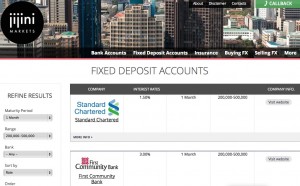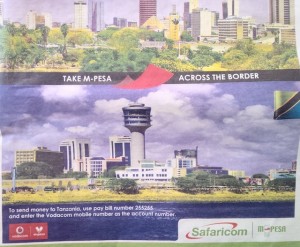Safaricom, the mobile money market leader with M-Pesa with 19 million customers has partnerships with 30 banks and 160 financial institutions as per their 2014 annual report that notes The new (API) platform (launched in January 2014) helped streamline operations for businesses that disburse staff salaries through M-PESA, as well as those that receive payments through M-PESA and need to move cash to their bank accounts on a regular basis.
It seems to very convenient to link your bank to your mobile money account – so that you can top-up your mobile money account. More so when you really need it in an emergency, or late at night or when on the road far away from any mobile money agent – but with just a few clicks on your phone, you get the cash you need to facilitate whatever need.
But there are some issues to consider about having the convenience of drawing cash from your bank account sraight on to your phone.
1. It drains savings. Looking at my M-Pesa statement at the Selfcare page on the Safaricom site, most of the activity that I use M-Pesa for is for payments out. All deposits are made with a purpose, usually to pay out a corresponding amount soon after either as remittance, utility bills, airtime, meals, repairs etc. It is easier to pay out money than build savings, and there are few savings options like M-Shwari, compared to the hundreds of expense item ones.
2. It is costly, with banks charging about $1 (Kshs 75-250) for customers to tap their phones and do the transfer from bank to mobile money. It costs much less, or is free to withdrawal cash from a bank ATM and deposit it at a mobile money agent.
3. Customers inevitably have things go wrong with their bank accounts – from misplaced funds to banks changing their terms or costs. What is a transaction fails? or money is sent to the wrong payee? Who do you complain to? You’re better off dealing with customer service at one or the other, but not at both a mobile company and a bank
4. Banks may have less trust than telcos in terms of being custodians of small amounts of funds.
.. if you leave Kshs 1,000 (~$12) in your M-Pesa account it will be there until you use it, with no phantom charges eating it away (it won’t stay in your phone for 6 months). But if you leave the same Kshs 1,000 in your bank account for a few months, the money will be exhausted by various tariffs like ledger fees, dormant account fees, minimum balance fees and the account will be drained out and shut down.
5. Banks change their terms and conditions too often. M-Pesa tariffs were revised again this week after almost two years in a very public way. Yet banks make several changes and don’t even inform customers till they see they stumble on new charges on their statements, or go to the bank and find that a service has been cancelled or changed.

